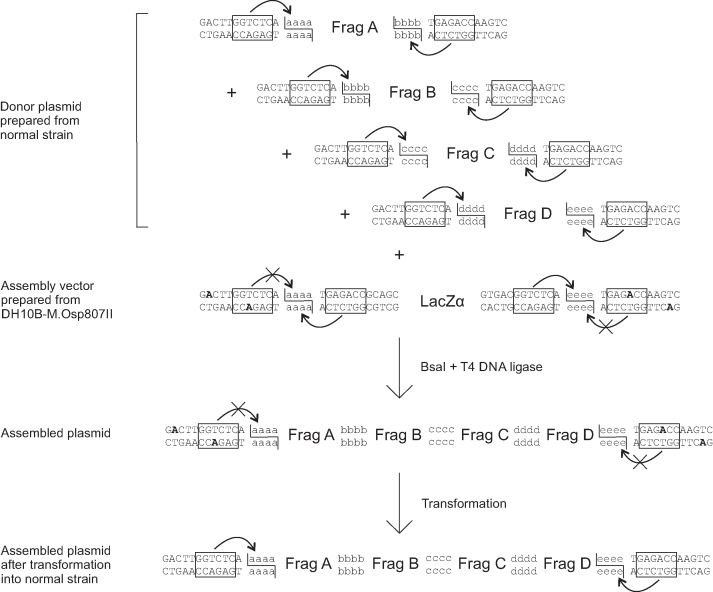Figure 3.
BsaI-M.Osp807II based MetClo system. The donor plasmids contain DNA fragments to be assembled (Fragments A–D) flanked by BsaI sites that generate compatible adhesive ends (schematically labelled aaaa-eeee). The BsaI sites overlap with the M.Osp807II methylase recognition sequence. Donor plasmids were prepared from a normal strain that does not express the M.Osp807II switch methylase. As a result, the BsaI sites are not methylated and so the insert DNA fragments can be released by BsaI digestion. The recipient assembly vector contains a LacZα selection marker flanked by head-to-head BsaI sites. The outer pair of BsaI sites closer to the vector backbone overlap with an M.Osp807II methylation sequence and so are methylation-switchable, whereas the inner pair of BsaI sites are not. Preparation of the assembly vector in the M.Osp807II switch methylase-expressing DH10B strain results in selective blocking of the outer pair of BsaI sites. The LacZα fragment can be released by BsaI through cutting at inner pair of BsaI sites. Following a one-pot reaction using BsaI and T4 DNA ligase, ligation among compatible adhesive ends results in ordered assembly of DNA fragments into the assembly vector backbone. The assembled fragment in the assembled plasmid is flanked by methylated BsaI sites, which are not cut by BsaI. Following transformation into a normal strain that does not express the M.Osp807II switch methylase, methylation of the flanking restriction sites is lost, and the assembled fragment can be released by BsaI for the next stage assembly.

